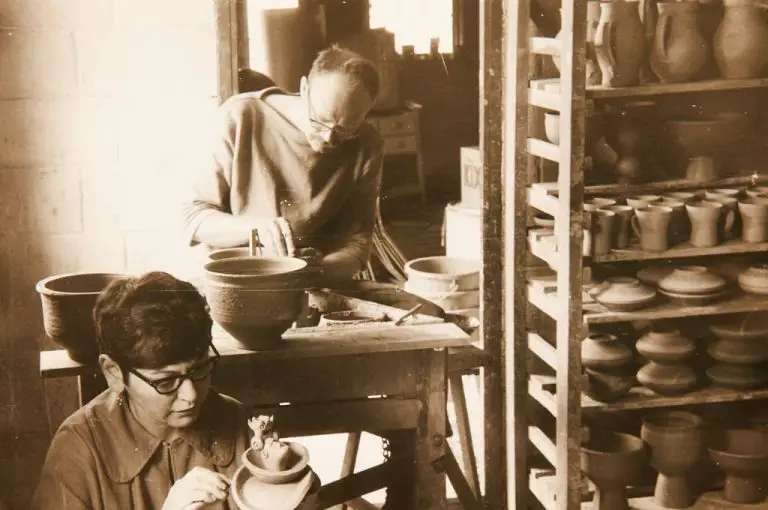Are The Terracotta Warriors Still There?
The Terracotta Army refers to the thousands of life-size clay soldier figures that were buried with China’s first emperor, Qin Shi Huang, around 210-209 BCE. The figures were discovered in March 1974 by local farmers digging a well near the city of Xi’an in Shaanxi Province, China. This chance discovery revealed one of the most significant archeological finds of the 20th century.
The Terracotta Army comprises over 8,000 soldiers, 130 chariots, and 670 horses arranged in battle formation around the tomb of Qin Shi Huang. The figures vary in height, uniform, and hairstyle according to their roles as archers, infantrymen, charioteers, cavalrymen, and generals. Each figure has unique facial features and details. The Terracotta Army provides invaluable insight into the military power and artistic sophistication of the Qin Dynasty (221–206 BCE).
The discovery of the Terracotta Army was considered one of the greatest archaeological discoveries of the 20th century. It drew global attention to China’s ancient history and is now one of the country’s most-visited tourist attractions. The figures continue to reveal insights into ancient Chinese warfare, art, culture, and technology.
Location
The Terracotta Army is located in Lintong District, Xi’an, Shaanxi Province, China. More specifically, it is situated around 1.5 kilometers east of the burial mound of Qin Shi Huang, known as Lishan, inside the Museum of Qin Terracotta Warriors and Horses.
The warriors were discovered in March 1974 by a group of farmers who were digging wells around 1.5 km east of Mount Lishan. Prior to the farmers’ discovery, this area was just farmland, and there were no indications that an enormous underground army was buried there.
Today, the site of the Terracotta Army occupies around 56,000 square meters or approximately 14 acres. It is part of a much larger necropolis built for Emperor Qin Shi Huang that extends over 22 square kilometers or 5,600 acres.
Xi’an, where the Terracotta Army is situated, served as the capital for 12 dynasties and has over 3,100 years of history. It continues to be a popular tourist destination, attracting visitors from around the world who come to see the Terracotta Warriors and other historic sites.
Excavation
The Terracotta Army was first discovered in 1974 by a group of farmers digging a well near Xi’an, China. Systematic archaeological excavations began soon after, led by archaeologist Zhao Kangmin. Over four pits were uncovered, spanning an area over 22,000 square meters. The excavation was an enormous undertaking, requiring hundreds of laborers working seven days a week for over three years. The process was extremely meticulous, with archaeologists carefully unearthing and documenting each life-size terracotta figure.
Pit 1 contained the main infantry and calvary units, estimated to contain over 6,000 warriors and horses. This pit was structured like an underground military camp with corridors, elevated walls, and drainage systems. Pit 2 was smaller in size but contained many notable artifacts including war chariots and high ranking officers. Over 1,400 clay figures were found here. Pit 3 featured an army command post filled with terracotta officials, generals, and a chariot. By far the largest was Pit 4, with over 6,000 figures set up in 11 corridors. This pit contained the majority of the archers and crossbowmen.
Conservation
The Terracotta Warriors require extensive conservation efforts to protect and preserve them. After being excavated, the warriors are very fragile and susceptible to damage. Their main threats are exposure to the elements, bacterial growth, and structural instability.
To counteract these threats, the warriors are kept in temperature and humidity controlled museum spaces designed to mimic their original underground conditions. According to the Smithsonian Magazine, recreating the pit-like environment where the warriors were originally found helps preserve them. The museum spaces maintain cooler temperatures and regulate airflow around the warriors (Smithsonian Magazine).
The Terracotta Warriors are also actively conserved. Damaged or deteriorating parts are stabilized and repaired. Missing pieces are filled in with conservation-grade materials and painted to blend with the originals, helping restore the warriors’ appearances (The Conservation Center). Ongoing maintenance like cleaning mold growth helps counter deterioration.
Thanks to the climate controlled conditions and hands-on conservation, the Terracotta Warriors are well protected despite their age and fragility.
Current Status
To date, over 8,000 terracotta warrior statues have been unearthed near Emperor Qin Shi Huang’s mausoleum in Lintong District, Xi’an, Shaanxi, China. Excavation of the terracotta army began in 1974 and is considered one of the greatest archaeological discoveries of the 20th century. The figures vary in height, uniform, and hairstyle in accordance with rank, and each one has unique facial features modelled after actual soldiers who served under Qin Shi Huang.
According to the Artnet article, archaeologists discovered over 200 additional terracotta warrior statues in early 2020. This discovery provides insight into how the figures were produced on an assembly line using molds. While thousands have been unearthed, it’s estimated that over 8,000 remain buried.

The terracotta army continues to be actively excavated and restored. The warriors are reassembled from fragmented pieces and treated to prevent weathering and deterioration. They are considered one of China’s most prized treasures and a significant representation of the country’s artistic heritage.
Museum
The terracotta warriors are mainly housed in the Museum of Qin Terra-cotta Warriors and Horses, located about 1.5 km east of the actual excavation pits. According to the Museum of Qin Terra-cotta Warriors and Horses, this museum covers an area of 16,300 square meters and contains Pit 1, Pit 2, and Pit 3 of the excavation site. The museum was opened to the public in 1979 and received over 2.5 million visitors annually.
The museum building is designed to resemble the imperial architecture of the Qin Dynasty. It houses over 7,000 life-size terracotta figures of warriors and horses arranged in battle formations, reflecting the enormous military power of the Qin Empire. According to MuseuMS, Pit 1 contains the main army, Pit 2 contains the cavalry and infantry, and Pit 3 contains the command post. The details and individuality of each terracotta figure are remarkable. The museum provides insight into the history, culture, and art of ancient China through these extraordinary artifacts.
Visiting
The Terracotta Army is located near the modern city of Xi’an, in Shaanxi Province, China. The warriors were accidentally discovered in 1974 by local farmers drilling a well. Today, the site is one of China’s most popular tourist destinations, drawing over 1 million visitors annually.
The Terracotta Warrior and Horse Museum was constructed on the excavation site to allow public viewing. The museum complex covers 16,300 square meters, with Pit 1 housing the largest portion of warriors and being the main draw for visitors. Pits 2 and 3 also contain warriors, horses, and artifacts.
Tickets can be purchased on-site, with prices ranging from 150 RMB in low season to 220 RMB during peak times. Multiple ticket options are available, from basic access to the pits to full packages with theater shows. Visitors should expect large crowds, especially during holidays and summer. The site can accommodate over 10,000 people per day.
When visiting, tourists walk on elevated platforms overlooking the pits to get a bird’s-eye view of the army. Photos are allowed. Guided tours and audio guides are also available to learn more about the warriors’ discovery and historical significance. Visitors typically spend 2-3 hours to view all three pits and the museum exhibits.
The nearest airport is Xi’an Xianyang International Airport, with the site around 34 km away. Frequent buses and tours operate between the airport and museum. The Terracotta Army is one of Xi’an’s foremost attractions, making it a must-see for any visitor.
(Lonely Planet, 2022)
Significance
The Terracotta Army is one of the most significant archaeological discoveries of the 20th century. Found outside the tomb complex of China’s First Emperor Qin Shi Huang, the thousands of life-size terra cotta soldiers, horses, and chariots provide an extraordinary glimpse into the military power and artistic sophistication of the Qin Dynasty (221-206 BCE).
The sheer scale and craftsmanship of the Terracotta Warriors make them unmatched anywhere in the world. Each soldier has unique facial features and details in their armor and clothing, demonstrating the artistic mastery of the artisans who created them. There are estimates of over 8,000 soldiers, several hundred horses, and over 100 chariots in the pits near Emperor Qin’s tomb. The warriors were arranged in battle formation, prepared to defend the tomb from any threats in the afterlife. This provides invaluable insight into ancient Chinese military tactics and formations.
Additionally, the Terracotta Army offers a wealth of knowledge about the weaponry, dress, hairstyles, and even dietary habits of Qin era China. Archaeologists have been able to reconstruct many details of how the First Emperor’s military forces were equipped and organized based on careful study of the warriors. The Terracotta Army provides a tangible connection to the grand vision and tremendous power held by the Qin Emperor over two millennia ago.
In short, the Terracotta Warriors are one of the most important archaeological finds in history. Their discovery has reshaped our understanding of ancient China and given us an unprecedented window into the world of the country’s first imperial dynasty. The continued research and conservation of the warriors ensures these monumental artifacts will reveal more secrets for generations to come.
Future
Excavation and research on the Terracotta Army is ongoing. In 2023, archaeologists announced the discovery of 20 new terracotta warriors at the site, bringing the total number excavated so far to around 2,000 (Source). However, experts believe there are still thousands more statues remaining to be uncovered. Estimates suggest the mausoleum complex could contain around 8,000 terracotta warriors in total.
New technological methods like 3D scanning are being used to help map and preserve the site. Researchers are also gaining new insights into how the statues were produced over 2,000 years ago. Recent excavations uncovered fragments that reveal details about the complex casting and production process used to create the army.
As the excavation continues, more discoveries are expected that will provide a clearer picture of the massive scale and artistic sophistication of the First Emperor’s grand vision for his afterlife. Protecting and analyzing new finds will be an ongoing effort by scientists to unlock the mysteries of this archaeological wonder of the world.
Conclusion
To recap, the answer is definitively yes – the Terracotta Army is still standing where it was originally built over 2,200 years ago. The thousands of warriors, horses, and chariots remain largely intact within the pits they were buried in near Emperor Qin Shi Huang’s mausoleum in Xi’an, China.
While natural elements and some losses over time have affected portions of the army, the majority of the sculptures remain in the same positions and formations they were built in during the 3rd century BCE. Ongoing conservation efforts aim to preserve the warriors for future generations.
The Terracotta Army provides an incredible glimpse into China’s first imperial dynasty and stands today as a reminder of the country’s long, rich history and legacy. The site remains one of China’s top tourist destinations, continuing to inspire awe and wonder at the craftsmanship and scale of this ancient funerary art.



